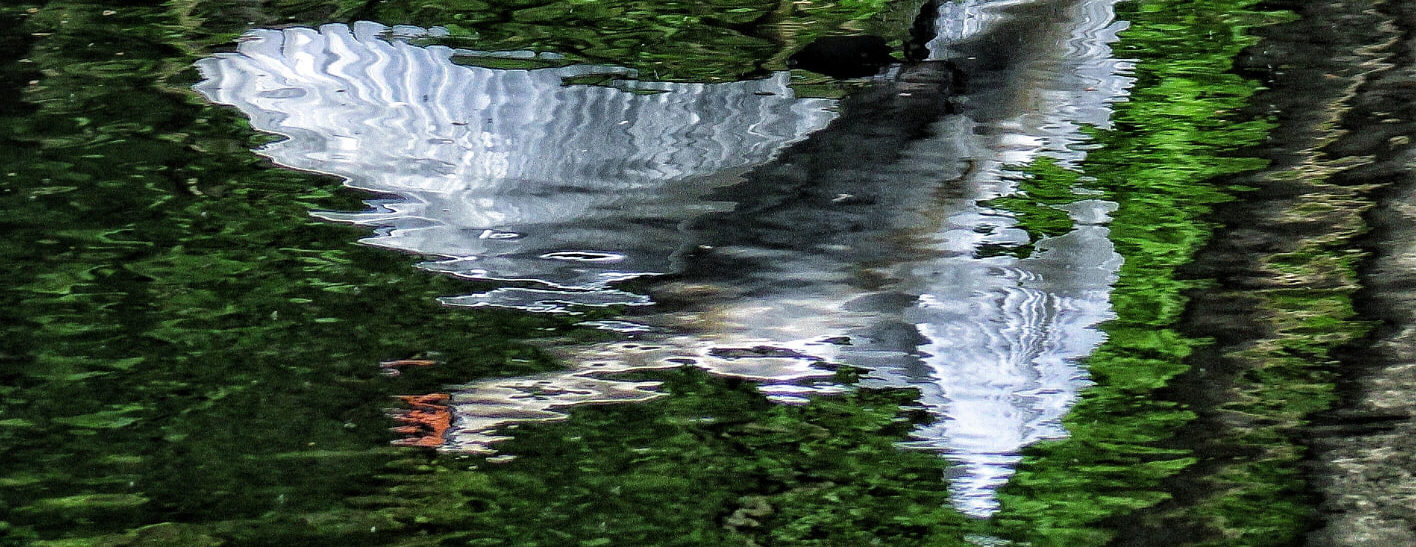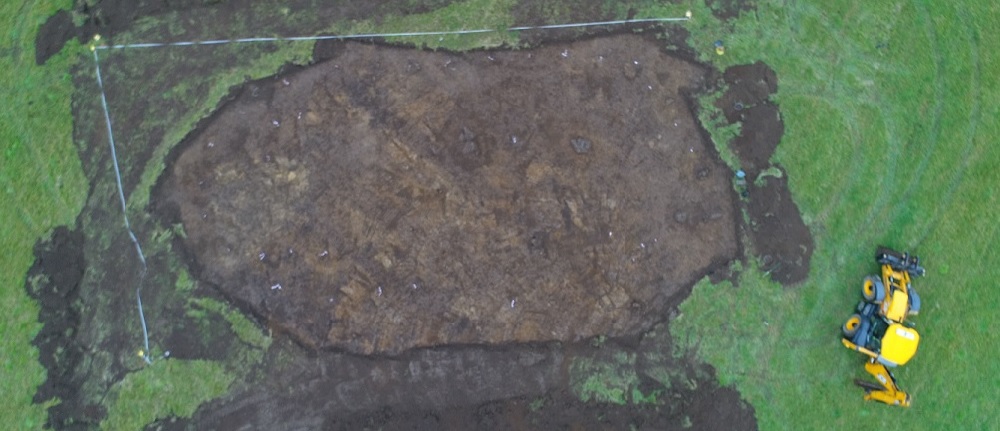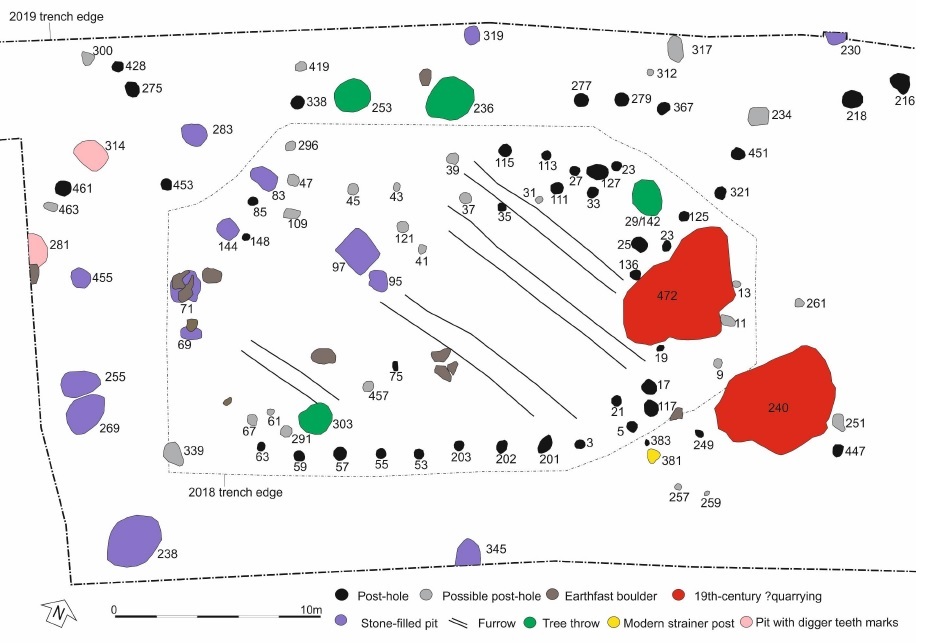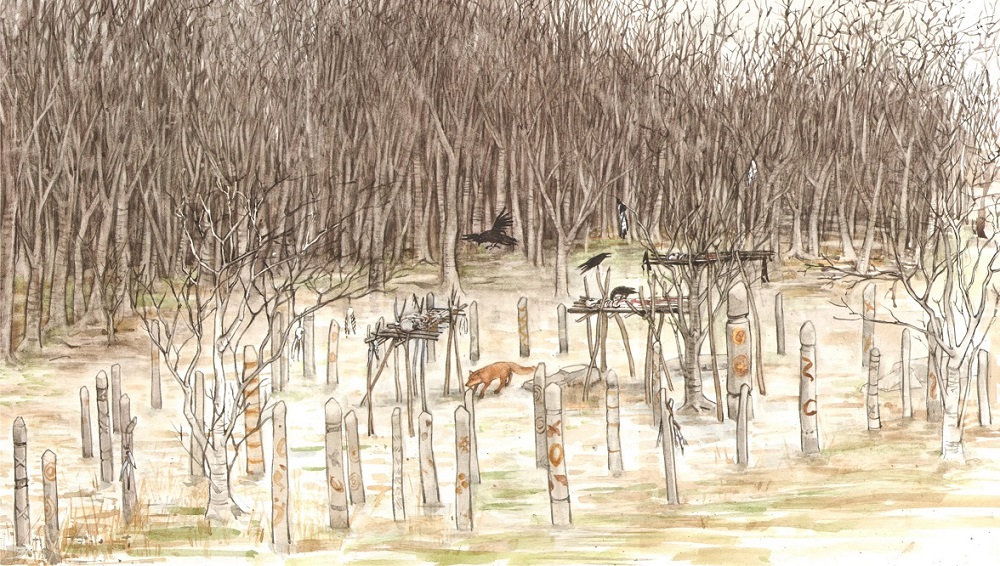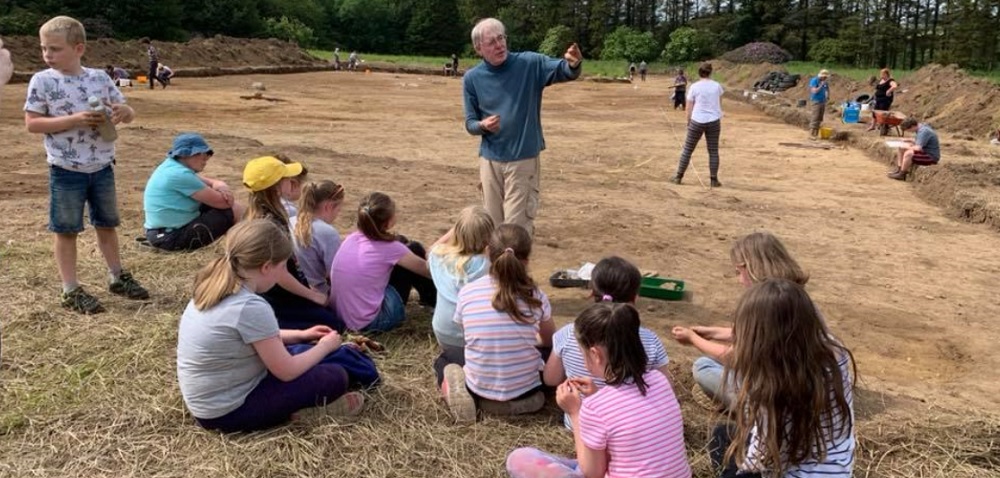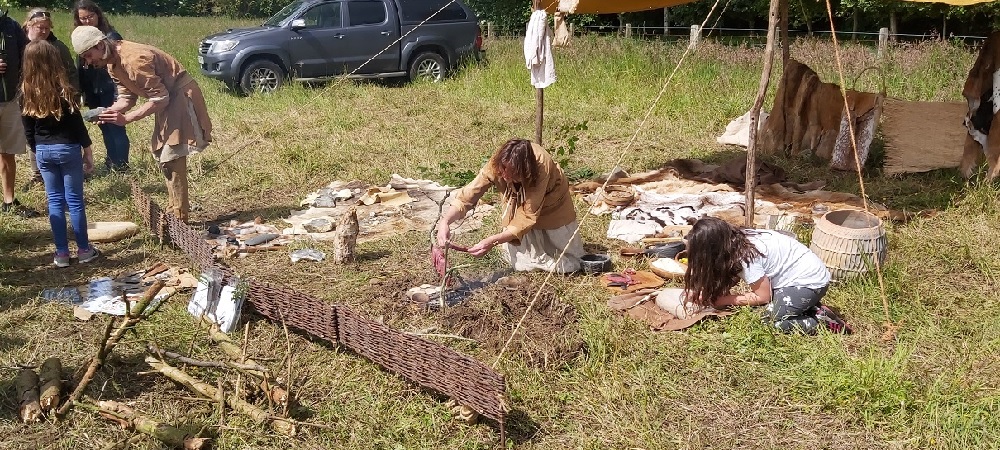In 2017 fieldwalking and a geophysical survey were carried in the fields near Hareshowe. Three aligned post-holes were found during an archaeological dig in 2017 and a larger area opened up in 2018. During the ten-day dig, several trenches were excavated over two fields. One trench 30x16m was cleared, cleaned and features half excavated. In total 232 volunteers took part in the dig, which included five local schools.
The excavation uncovered what is believed to be a building, oriented roughly Southwest – Northeast consisting of at least 70 features. The excavated building is heavily ploughed and burrowed but the bases of features excavated suggest that it was possibly a building 12-14m wide and 27m long consisting of posts set in post-holes with several tree boles – holes left by living trees when they die and fall. Radiocarbon dating has been carried out on samples but as the site is heavily disturbed the dates have ranged from the Mesolithic to the medieval period – a range of 9000 years! It is most likely that the structure dates to the Neolithic period. There are two or three possible small sherds of prehistoric pottery, flints and possible quartz objects.
Plan showing 2018 Trench 1 with features excavated
Possible interpretation of the post alignments as a possible mortuary enclosure (by Jan Dunbar)
In 2019 a further archaeological dig took place to explore the site further. The dig revealed that there are also two lines of post-holes to the North and the West which may represent entrances into the structure. In 2021 this was investigated further but no additional features were revealed as this area of the field is very damaged by post-medieval agriculture. It would appear that this structure was not roofed; there is certainly no evidence of large interior post-pits which would be required to support large central timbers. It would appear to have been an unroofed, possibly Neolithic mortuary enclosure (as shown in the illustration above) consisting of small and medium posts and possibly also trees (living or dead/fallen) and possibly also earthfast boulders.
One example of a similar structure at Cairsie Mains is a rectilinear structure including 100 features of which 24 are of definite, and another four possible, human origin. These included posts and tree-throw pits and is dated to c 3500-3000BC.
It was not possible to determine the sequence of building at this Aden site as the trees may have been in situ with the man-made structure or they may have felled prior to erection. There is a large earthfast boulder at the West edge of the field with a cup mark in the upper surface; several 19th and 20th Century attempts have been made to remove the stone including a trench dug around it (filled with soil containing fragments of 20th Century glass) and chisel marks on the stone. There is no evidence from this archaeological work that the stone and structure were connected but the stone was definitely above ground and visible in the Neolithic period.
Agricultural furrows were more fully uncovered in 2019 and 2022, and this revealed that some of the stone-holes and stone-filled pits may have been disturbed in the medieval period when the rig and furrow cultivation system was developed. More 19th and 20th Century disturbance was recorded including two features which had been created with a toothed digger bucket; presumably this was the removal of large stones and it cannot be ruled out that pits were created by removing large stones from a stone circle.
James Dilley and Sally-Ann (Ancient Craft) Neolithic campsite
As part of the archaeological dig at the Neolithic Structure site in Aden Country Park, two archaeological open days (30th June and 6th July 2019) were developed to provide an opportunity for people to find out more about Aden’s archaeology, and provide an insight into what life would have been like during the Neolithic period.
James Dilley and Sally-Ann (Ancient Craft) were invited to Aden to set up a Neolithic campsite to demonstrate to visitors, volunteers, and the local community the different practical tasks which we believe would have formed part of Neolithic people’s daily lives. This included fire making and flint knapping demonstrations, cookery techniques such as grinding grain, the making of needles and textiles, along with demonstrations on how and why a bull roarer or Australian telephone was used.
Other open day demonstrations carried out by volunteers Heather Jennings and Elaine Lindsay (Something Corny) included traditional dyeing techniques, rope and nettle cordage making, pottery demonstrations by Rebecca Hankinson, and experimental Neolithic music making by Nadine Ralston.
At the end of open day, the archaeological volunteers were also provided with a hands-on flint knapping workshop which everyone involved loved. A great way to reward the volunteers’ hard work.
Both open days, attracting hundreds of visitors to Aden Country Park, provided a unique opportunity for people to engage with the archaeological heritage of the site, discover what had been found, as well as enjoying the Neolithic themed activities.
These open day activities were carried out as part of a successful Aberdeenshire Council, Aden Restoration & Redevelopment Project funding application to the National Lottery Heritage Fund (NLHF), the Aden Archaeology Project funding application to Historic Environment Scotland (HES) and funding support from the Aberdeenshire Council Archaeology Service and the Friends of Aden.
Along with the funding support, it is important to also recognise Ali Cameron of Cameron Archaeology who led the archaeological excavation, James Dilley and Sally-Ann of Ancient Craft who delivered the Neolithic campsite activities, along with the quality, amount, and value of the volunteer input. The Neolithic Structure archaeological dig and open day activities would not have been possible without the volunteer time, effort, and enthusiasm.
For further information about the Late 19th and Early 20th Century Trenches dig, please download the attached Data Structure Reports (DSR) or Summary Reports below, however please be aware that the reports are all large in size and depending on your internet connection, might take a few minutes to download.


